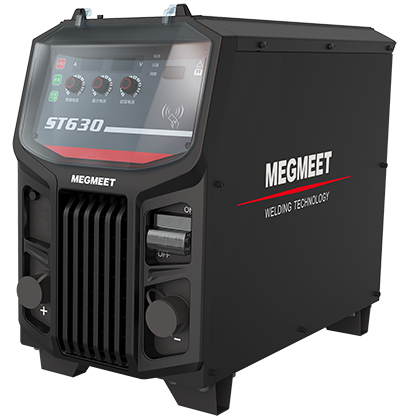Stick welding, or Shielded Metal Arc Welding (SMAW), is a cornerstone of industrial welding, known for its versatility and reliability. One of the key decisions welders face is choosing between uphill stick welding and downhill stick welding. Both techniques have their strengths, weaknesses, and best-use scenarios. In this comprehensive guide, we'll explore the differences between uphill and downhill stick welding, their respective applications, and how to choose the right technique for your project.
I. Understanding Uphill Stick Welding
Uphill stick welding involves welding against the direction of gravity, where the electrode moves upward along the joint. This technique is widely used in industries requiring high-strength welds.
1) Advantages of Uphill Stick Welding
Deeper Penetration: Uphill welding provides better penetration into the base metal, resulting in stronger and more durable welds.
Better Bead Control: Welders have greater control over the shape and appearance of the weld bead, minimizing defects.
Reduced Slag Inclusions: Gravity helps prevent slag from being trapped in the weld pool.
2) Challenges of Uphill Stick Welding
Higher Skill Level Required: Uphill welding demands precise control over the arc and travel speed.
Slower Welding Speed: The process is typically slower due to the need for careful manipulation of the electrode.
Increased Fatigue: Welders may experience more physical strain due to the upward movement.
3) Applications of Uphill Welding
Structural Steel Fabrication: Ideal for critical joints in buildings, bridges, and heavy machinery.
Pipeline Welding: Preferred for vertical and uphill welding in pipeline construction.
Shipbuilding: Used for welding thick steel plates and joints in marine applications.
II. Understanding Downhill Stick Welding
Downhill stick welding involves welding in the direction of gravity, where the electrode moves downward along the joint. This technique is often favored for its speed and ease of use.
1) Advantages of Downhill Stick Welding:
Faster Welding Speed: Downhill welding allows for quicker travel speeds, boosting productivity.
Easier for Beginners: The technique is less technically demanding, making it accessible to less experienced welders.
Less Physical Strain: The downward motion is less tiring for welders.
2) Challenges of Downhill Stick Welding:
Shallow Penetration: The weld may not penetrate as deeply into the base metal.
Higher Risk of Defects: Faster travel speeds can lead to issues like undercutting and lack of fusion if not controlled properly.
Slag Inclusions: Slag is more likely to get trapped in the weld pool.
3) Applications of Downhill Welding:
Sheet Metal Fabrication: Ideal for thin-gauge materials where speed and minimal distortion are prioritized.
Repair and Maintenance: Used for quick repairs and maintenance tasks where weld penetration is not the primary concern.
Automotive Welding: Common in car body repairs and lightweight steel fabrication.
III. Uphill vs. Downhill Stick Welding: Choosing the Right Technique
Factor
| Uphill Welding | Downhill Welding |
| Penetration | Deeper penetration, stronger welds | Shallower penetration, less robust welds |
| Speed | Slower welding speed | Faster welding speed |
| Skill Level | Requires more skill and experience | Easier for beginners and less experienced welders |
| Applications | Structural steel, pipelines, shipbuilding | Sheet metal, repairs, automotive, lightweight steel |
| Physical Demand | More physically demanding due to upward motion | Less tiring due to downward motion |
IV. Best Practices for Uphill and Downhill Stick Welding
1. Use the Right Equipment:
2. Maintain Proper Technique:
3. Optimize Welding Conditions:
4. Monitor and Adjust:
V. How to Choose the Right SMAW Welding Machine for Sale
Selecting the right SMAW welding machine is crucial for achieving professional-quality welds. Consider the following:
Amperage Range: Ensure the machine can handle various metal thicknesses.
Duty Cycle: A higher duty cycle allows for longer welding sessions without overheating.
Electrode Compatibility: Verify that the machine supports the stick electrodes you use.
Portability: For on-site jobs, choose a portable SMAW welding machine for sale.
Visit Megmeet Welding Technology to explore high-quality SMAW welding machines and stick electrodes at competitive prices.

VI. Frequently Asked Questions (FAQs)
1. What are the best stick electrodes for uphill and downhill welding?
E7018 electrodes are ideal for uphill welding due to their deep penetration and low-hydrogen properties.
E6013 electrodes are suitable for downhill welding because of their smooth, flat weld beads.
2. How do I prevent defects in downhill welding?
3. Is uphill welding better for thick metals?
Yes, uphill welding provides deeper penetration, making it ideal for thick metals. Preheating is also recommended to ensure proper fusion.
4. Where can I find a reliable SMAW welding machine for sale?
Visit Megmeet Welding Technology for high-quality SMAW welding machines and expert advice.
Conclusion
The choice between uphill and downhill stick welding depends on the project’s requirements, the welder’s skill level, and the desired weld characteristics. Uphill welding excels in applications requiring deep penetration and strength, while downhill welding is ideal for faster, less critical tasks. By understanding both techniques and investing in the right tools, such as a high-quality SMAW welding machine for sale, you can achieve professional-grade welds consistently.
For expert guidance, premium stick electrodes, and the best SMAW welding machine price, trust Megmeet Welding Technology. Elevate your welding projects with unmatched quality and precision.
Related articles:
1. Choosing the Right Welding Process: MIG vs TIG vs Stick vs Flux Core Welding
2. Frequently Asked Questions About Stick Welding
3. How to Stick Weld Different Thickness Metals?
4. AC Vs DC Stick Welding – Which One Is The Best & Why?
5. How to Improve Your Stick Welding Technique?




